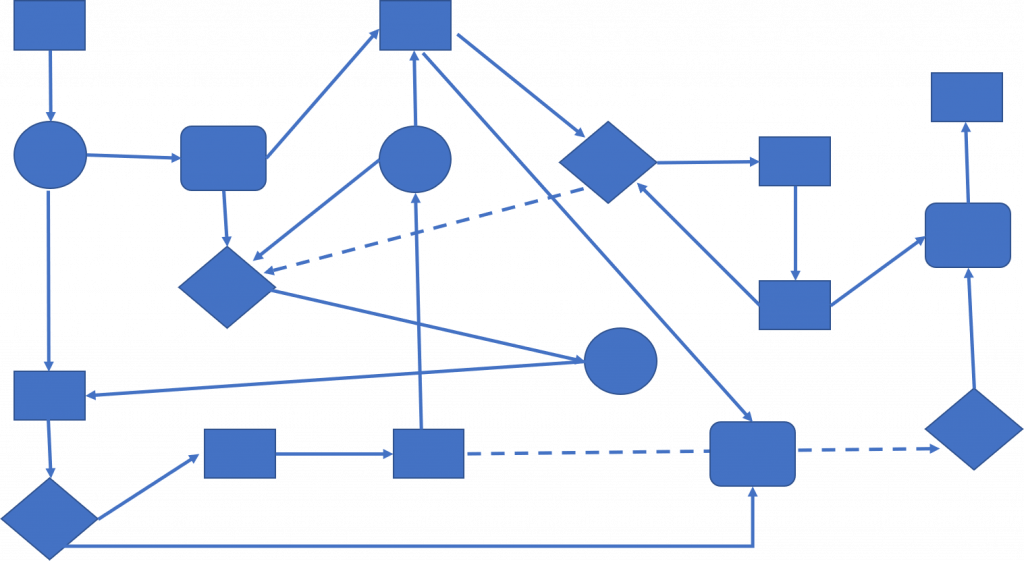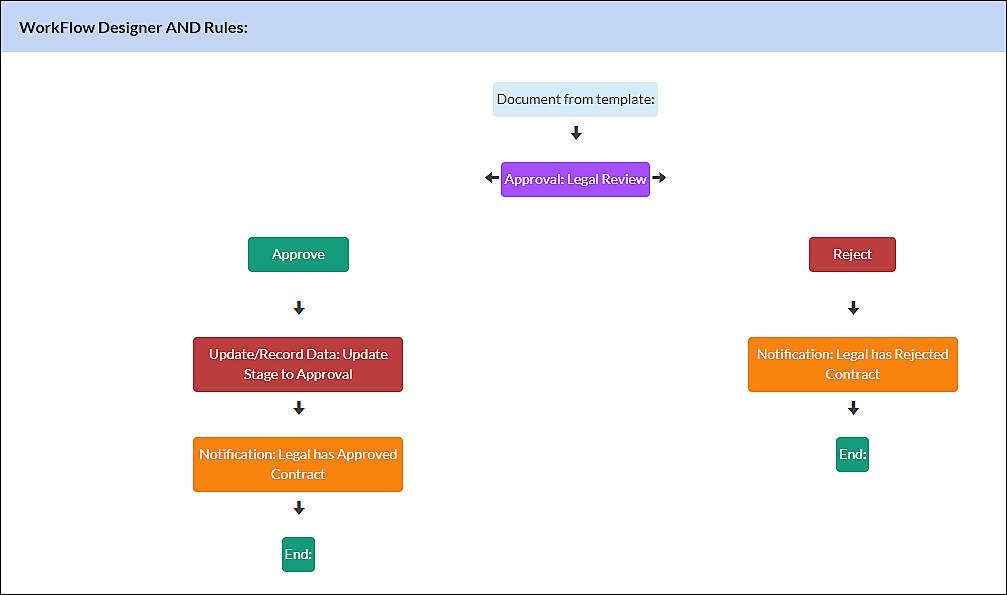Contract Workflows: What to Do Before You Automate
By Karen Howe and Wayne Foster
The benefits of leveraging contract management software to control the flow of contracts through your organization are pretty compelling. Besides reducing or eliminating the need to manually send email notifications, set calendar reminders, or remember who is responsible for which step, automated contract workflows help ensure that your business rules are followed.
But how well do you really know your contracting process? Complex processes can appear straightforward when laid out neatly on paper with each step described at a high level. But dig a little deeper and you might find otherwise. Our team at Contract Logix has heard statements like this from customers when describing how their organization handles pre-execution processes, like new contract requests, contract reviews and approvals:
“Our process is pretty simple. Here’s a Visio that shows our entire contracting process, from beginning to end.”

When introducing a contract management software solution into your organization, you might be tempted to immediately build contract workflows to fully automate your contract process. But there are pitfalls to this approach, and a more conservative tactic may provide better insight into what’s really going on and help you be more successful in the long run.
Here are 6 tips on what do to BEFORE you automate your contract workflows.
1. Ask the users
If you were to go around to all the various departments involved with getting a contract from point A to point Z, you might be surprised to find that your neat flowchart doesn’t tell the whole story. You may have forgotten a step or be in the dark about what actually happens. It’s crucial to get feedback (and buy-in) from all the key stakeholders in order to understand and refine your process.
2. Identify alternative paths
Do contracts over a certain contract value get special treatment? Or is a different process needed when contracts originate from a different location or will be governed by the laws of a particular state? These alternative business rules must be accounted for in your process.
3. Plan for exceptions to the rules
There will always be exceptions – contracts that need expediting for some reason, or “special” circumstances where someone with the authority to make a judgment call about how to proceed causes the process to veer off the prescribed path. Don’t be caught without a plan for these.
4. Vet each step manually before trying to automate
Each step in your process might actually represent several tasks that need to be coordinated between different departments or functions and have several possible outcomes depending on certain conditions being met or not met. For example, a step like “Legal Approval” might break down into many smaller tasks involving interactions between Contract Administrators, Legal Assistants, Paralegals, Attorneys, and others. You can’t develop effective automated contract workflows unless everyone involved in the process knows and understands what they need to do. A “run-through” using manual procedures can uncover holes in your process.
5. Break your business process into smaller chunks
Trying to incorporate your entire process in a single workflow would be daunting to build and complex to maintain, even with an easy-to-use drag and drop workflow designer like the one included with intelligent contract software Contract Logix. Instead, break it up into smaller pieces.
6. Recognize that not everything can be automated
Remember those “exceptions” to the rules and those “special circumstances” I mentioned earlier? Automated contract workflows aren’t equipped to handle these types of unexpected situations. You need to focus on critical, vital areas having clear and predictable business rules.
Takeaway
The advantages that contract management software with automated workflow capabilities bring to your contracting process are many, but before taking the leap there are things to consider. Not fully understanding your business process, not taking all individuals and nuances involved in the process into consideration and being overly ambitious at the start can lead to trouble. It may sound like a cliché but trying to “boil the ocean” when it comes to automating your contracting process is not the best approach.
About the Authors
Karen Howe is the Director of Training at Contract Logix. She’s currently preparing a set of video tutorials showcasing some exciting new features. Stay tuned for more details in future blogs.
Wayne Foster is the Senior Director of Product Management at Contract Logix. Wayne is currently reviewing customer use cases, prioritizing work and herding cats.



